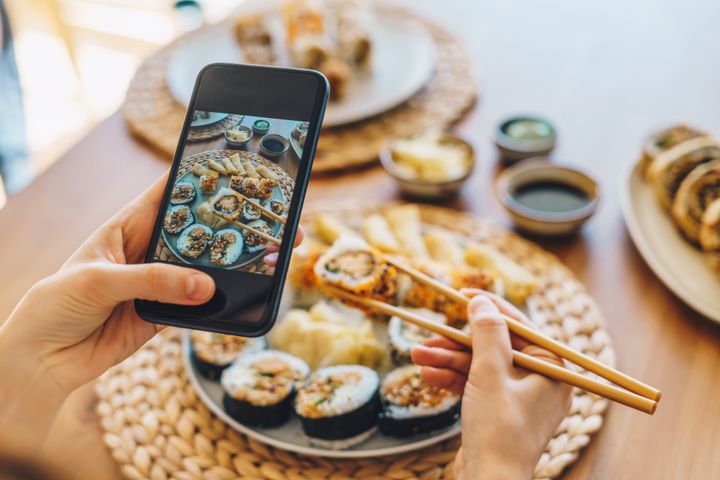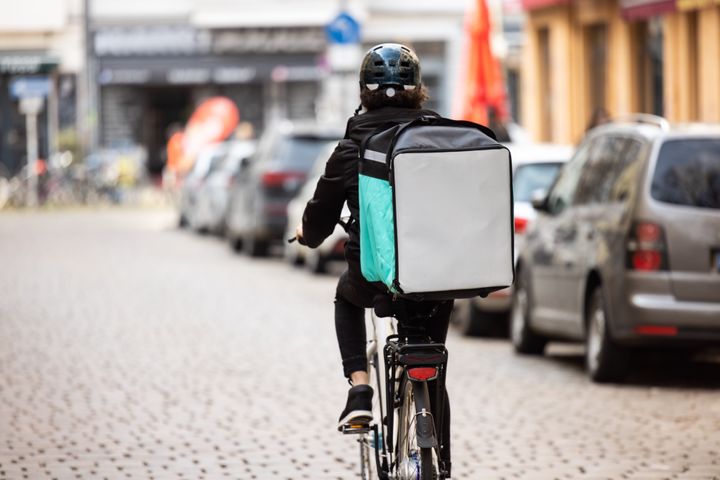
My takeout has been arriving at my door in less appetizing states more frequently, with parts of the meal missing (Where’s the rice? Where’s the sauce?), sloppily thrown together, and, even more troublingly, the wrong temperature. Because I’ve already waited upwards of an hour for it to arrive, I give into my hanger and eat the food in whatever state it’s arrived in: hot food turned cold and gelatinous, salads wilted and sweating.
It’s not just that it’s unappetising that your sushi arrives lukewarm; it can actually be dangerous. According to Bryan Quoc Le, a food scientist and the author of the book “150 Food Science Questions Answered,” “As food enters the temperature zone at or near room temperature, the microorganisms that have contaminated the food will proliferate rapidly. While the rate at which this occurs depends on the level of saltiness, sugar, moisture and acidity of the food, most foods that have been freshly prepared will have some level of spores or bacteria on their surface. If the number of pathogens in the food reaches a critical number, they can cause foodborne illness in the consumer.”
Before you cancel your delivery apps, let’s get into the specifics of why and how temperature abuse can cause food safety issues and when it may be a problem.
What happens when food sits at the wrong temperature?
We’ve all carted groceries home in a sweltering car or forgotten leftovers on the counter for a few hours without disastrous results, and that’s because most food can sit at room temperature for about two hours before it becomes a health risk, according to the USDA.
But as Tiffany Swan, food scientist and formulator, shared, “The bugs don’t set a timer. You aren’t going to get sicker at 4:01 than at 3:58. Ideally, since we don’t know how long [the food] was out of ideal temperatures, it is best to eat your delivery as soon as possible. If you can’t, get it in the fridge right away, then fully reheat it to 165ºF before eating.”
When it’s too darn hot (like we’ve been experiencing in much of the U.S. with heat domes and temperature highs breaking records) two hours can decrease to an hour, according to Dr. Ellen Schumaker, director of outreach at Safe Plates at the Department of Agricultural and Human Sciences at North Carolina State University. She said, “When it’s about 90 degrees Fahrenheit or above outside, you only have about an hour before the food should be refrigerated to avoid bacterial growth.”
Beware of the “danger zone.”
To the uninitiated, the danger zone may sound like a cheesy rock hair band name, but it’s the sweet spot (between 90-140ºF) in which microorganisms start to really grow. According to Le, “When food cools down or is heated up to these temperatures, this can result in a large increase in microorganisms by 100 to 1,000 times within a few hours.”
In the danger zone, bacteria like Bacillus cereus, Staphylococcus aereus, Pseudomonas aeruginosa, Escherichia coli, Clostridium perfringens, and varieties of salmonella can thrive. These bugs can be quite unpleasant, whether it’s a night spent over the porcelain throne or for the more vulnerable like young children or the immunocompromised, it can lead to life-threatening conditions and even death.
Le warns to be especially cautious of meat, dairy, seafood and poultry if they’ve entered the danger zone, as these have the highest probability of growing pathogens. Remember, foodborne illness doesn’t necessarily change the colour or odour of food, so the sniff test isn’t sufficient to tell whether your food is safe.

What are delivery services doing to prevent this?
One potential solution is to require takeout to be delivered in insulated bags, which according to Le can help maintain a safe temperature for food and limit the growth of microorganisms.
According to a spokesperson from Uber Eats, “Uber Eats is committed to helping customers get the foods they love, and we work closely with food safety experts to help inform safe delivery practices for couriers and restaurants. We routinely share food safety information, like temperature management and contamination prevention, with US couriers and encourage the use of insulated bags. We are always innovating to help make the Uber Eats experience as safe and enjoyable as possible for our communities.”
A spokesperson for GrubHub commented, “Food quality and safety is of the utmost importance, and drivers who contract with us are required to use the appropriate insulated hot/cold delivery bags. We aim for speedy and efficient delivery to limit the amount of time that passes from when the order leaves the restaurant and is delivered to the diner.”
DoorDash did not respond to our request for comment.
What should you do if your takeout arrives at the wrong temperature?
We could all do more to prevent food waste, but if eating the food could make you sick, it may be best to throw it out. Swan shared, “I firmly believe in trusting your gut — if it smells off, looks off, or just seems wrong, rather than just ‘not hot,’ don’t risk it and throw it out. In those situations, it probably meant that the meal wasn’t created with the freshest ingredients and then it spent too much time in preparation and delivery.”
Put in a request with the delivery service or reach out to the restaurant and explain the problem. There are different regulations on transporting food delivery for each state, according to Schumaker.